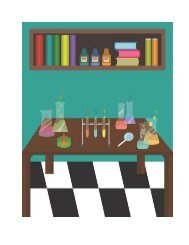(FINAL) Chemistry Notebook 2016-17
- No tags were found...
You also want an ePaper? Increase the reach of your titles
YUMPU automatically turns print PDFs into web optimized ePapers that Google loves.
The Learning Goal for this section is: Relate acidity and basicity to hydronium and hydroxyl ion concentration and pH<br />
Acids and Bases<br />
The Observable Properties of Acids and Bases<br />
The words acid and alkaline (an older word for base) are derived from direct sensory experience.<br />
Acid Property #1:<br />
The word acid comes from the Latin word acere, which means "sour." All acids taste sour. Well<br />
known from ancient times were vinegar, sour milk and lemon juice. Aspirin (scientific name:<br />
acetylsalicylic acid) tastes sour if you don't swallow it fast enough. Other languages derive their word<br />
for acid from the meaning of sour. So, in France, we have acide. In Germany, we have säure from<br />
saure and in Russia, kislota from kisly.<br />
Base Property #1:<br />
The word "base" has a more complex history (see below) and its name is not related to taste. All<br />
bases taste bitter. For example, mustard is a base. It tastes bitter. Many medicines, because they are<br />
bases, taste bitter. This is the reason cough syrups are advertised as having a "great grape taste."<br />
The taste is added in order to cover the bitterness of the active ingredient in cough syrup.<br />
Acid Property #2:<br />
Acids make a blue vegetable dye called litmus turn red.<br />
Base Property #2:<br />
Bases are substances which will restore the original blue color of litmus after having been reddened<br />
by an acid.<br />
Acid Property #3:<br />
Acids destroy the chemical properties of bases.<br />
Base Property #3:<br />
Bases destroy the chemical properties of acids.<br />
Neutralization is the name for this type of reaction.<br />
Acid Property #4:<br />
Acids conduct an electric current.<br />
Base Property #4:<br />
Bases conduct an electric current.<br />
This is a common property shared with salts. Acids, bases and salts are grouped together into a<br />
category called electrolytes, meaning that a water solution of the given substance will conduct an<br />
electric current.<br />
Non-electrolyte solutions cannot conduct a current. The most common example of this is sugar<br />
dissolved in water.<br />
150





